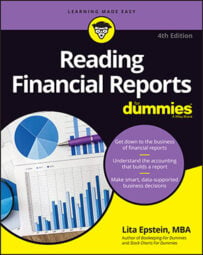Officially, two types of accounting methods dictate how a company records its transactions in its financial books: cash-basis accounting and accrual accounting. The key difference between the two types is how the company records cash coming into and going out of the business.
Within that simple difference lies a lot of room for error — or manipulation. In fact, many of the major corporations involved in financial scandals have gotten into trouble because they played games with the nuts and bolts of their accounting method.
Cash-basis accounting
In cash-basis accounting, companies record expenses in financial accounts when the cash is actually laid out, and they book revenue when they actually hold the cash in their hot little hands — or, more likely, in a bank account.
For example, if a painter completes a project on December 30, 2012, but doesn't get paid for it until the owner inspects it on January 10, 2013, the painter reports those cash earnings on his 2013 tax report. In cash-basis accounting, cash earnings include checks, credit card receipts, and any other form of revenue from customers.
Smaller companies that haven't formally incorporated and most sole proprietors use cash-basis accounting because the system is easier for them to use on their own, meaning that they don't have to hire a large accounting staff.
Accrual accounting
If a company uses accrual accounting, it records revenue when the actual transaction is completed, not when it receives the cash. In other words, the company records revenue when it earns it, even if the customer hasn't paid yet. So the painter who finishes a job in 2012 but doesn't get the cash for that job until 2013 still reports the income on his 2012 taxes.
Companies handle expenses in the same way. A company records any expenses when they're incurred, even if it hasn't yet paid for the supplies. For example, when a carpenter buys lumber for a job, he may likely do so on account and not actually lay out the cash for the lumber until a month or so later, when he gets the bill.
All incorporated companies must use accrual accounting according to the generally accepted accounting principles (GAAP) because revenues are matched to expenses in the same month they occur. If you're reading a corporation's financial reports, what you see is based on accrual accounting.
Why method matters
The accounting method a business uses can have a major impact on the total revenue it reports, as well as on the expenses it subtracts from the revenue to get the bottom line. Here's how:
Cash-basis accounting: Expenses and revenues aren't carefully matched on a month-to-month basis. The company doesn't recognize expenses until it actually pays the money, even if it incurs the expenses in previous months. Likewise, the business doesn't recognize the revenues it earned in previous months until it receives the cash. However, cash-basis accounting excels in tracking the actual cash available.
Accrual accounting: Expenses and revenue are matched, giving a company a better idea of how much it's spending to operate and how much profit it's making. The company records expenses in the month incurred, even if it doesn't pay out the cash until later. Likewise, the company records revenues in the month it completes the project or ships the product, even if the company hasn't yet received the cash.
The way a company records payment of payroll taxes, for example, differs with these two methods. In accrual accounting, each month the company sets aside the amount it expects to pay toward its quarterly tax bills for employee taxes using an accrual (a paper transaction in which no money changes hands).
The entry goes into a tax liability account (an account for tracking tax payments that the company has made or must still make). If the company incurs $1,000 of tax liabilities in March, it enters that amount in the tax liability account even if it hasn't yet paid out the cash. That way, the expense is matched to the month in which it's incurred.
In cash accounting, the company doesn't record the liability until it actually pays the government the cash. Although it incurs tax expenses each month, a company using cash accounting shows a higher profit during two months every quarter, and possibly even shows a loss in the third month when the taxes are paid.
To see how these two methods can result in totally different financial statements, imagine that a carpenter contracts a job with a total cost to the customer of $2,000. The carpenter's expected expenses for the supplies, labor, and other necessities are $1,200, so his expected profit is $800.
He contracts the work on December 23, 2012, and completes the job on December 31, 2012, but he isn't paid until January 3, 2013. The contractor takes no cash up front and instead agrees to be paid in full upon completion.
If he uses the cash-basis accounting method, then because no cash changes hands, he doesn't have to report any revenues from this transaction in 2012. But say he lays out the cash for his expenses in 2012. In this case, his bottom line is $1,200 less, with no revenue to offset it, and his net profit for the business in 2012 is lower.
If you're a small business owner looking to manage your tax bill and you use cash-basis accounting, you can ask vendors to hold payments until the beginning of the next year, to reduce your net income and thereby lower your tax payments for the year.
If the same carpenter uses accrual accounting, his bottom line is different. In this case, he books his expenses when they're actually incurred. He also records the income when he completes the job on December 31, 2012, even though he doesn't get the cash payment until 2013. He increases his net income with this job — and also his tax hit.

